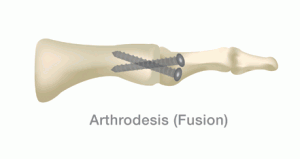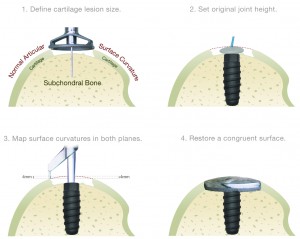Hallux Limitus
When the big toe joint develops a painful condition called hallux limitus, people affected by the disorder may experience intense pain, difficulty walking and problems performing everyday activities. Medically referred to as the MTP (metatarso-phalangeal) joint, the big toe joint is cushioned with the same type of cartilage covering other joints. If the MTP joint suffers enough trauma due to injury or simple wear and tear, the cartilage may become damaged and fail to provide enough protection to keep joint bones from scraping together.
Consequently, the creation of osteophytes (bone spurs) may occur from this constant grinding that reduces the flexibility of the big toe. Because you need your big toe to bend when you walk, a condition of hallux limitus (also called hallux rigidus) can dramatically interfere with your ability to walk normally and without pain.
Characteristics of Hallux Limitus
- Predominantly diagnosed in adults between 30 and 60 years old
- Podiatrists are not sure why hallux limitus affects some people and not others
- Most people suffering hallux limitus have experienced an injury to the big toe, possess abnormal foot anatomy or have an unusual gait that increases joint stress
- Advanced hallux limitus produces symptoms that include palpable bone spurs on top of the MTP joint and a grinding feeling or noise when the big toe’s joint is moved.
Treatment for Hallux Limitus
Upon initial appearance of symptoms, treatment measures should involve resting the affected foot, taking ibuprofen to reduce inflammation and wearing shoes with stiff soles to decrease flexing of the toe. Shoes should also have an expanded area for swelled toes to prevent exacerbating a hallux limitus condition. Physical therapy and steroid injections may also help relieve pain and stiffness as well. Custom molded orthotics can sometimes reduce the pain with specialized modifications for Hallux limitus.
When Surgery is Needed
Worsening hallux limitus may require surgery to remove bone spurs causing joint stiffness. Surgery may also modify foot anatomy to facilitate toe flexibility by providing more room for the toe to bend. If cartilage damage is the primary cause behind a hallux limitus diagnoses, fusion surgery (arthrodesis) may be recommended by the attending podiatrist. With arthrodesis, cartilage is excised so that the joint can be improved with screws, pins and plates that eventually fuse the remaining bones. Although the toe will no longer be able to bend, any pain previously felt is eliminated and the person can walk once again without experiencing pain.
With arthrodesis, cartilage is excised so that the joint can be improved with screws, pins and plates that eventually fuse the remaining bones. Although the toe will no longer be able to bend, any pain previously felt is eliminated and the person can walk once again without experiencing pain.
Today there are some other options that help maintain toe motion and relive pain such as joint replacement or joint resurfacing of the big toe. There are some great products on the market that replace the cartilage with a metallic implant that allows for pain free motion.
There is also cartilage replacement surgery using juvenile cartilage and PRP to replace the cartilage defect. i have many patients that are pain free via this method.
Lastly there is a method called arthrodiastasis where we distract the joint and allow it to repair. I use this procedure when necessary and have had very satisfied patients.
So when it comes to a stiff big to joint come in for an appointment to see which procedure is best for you.

